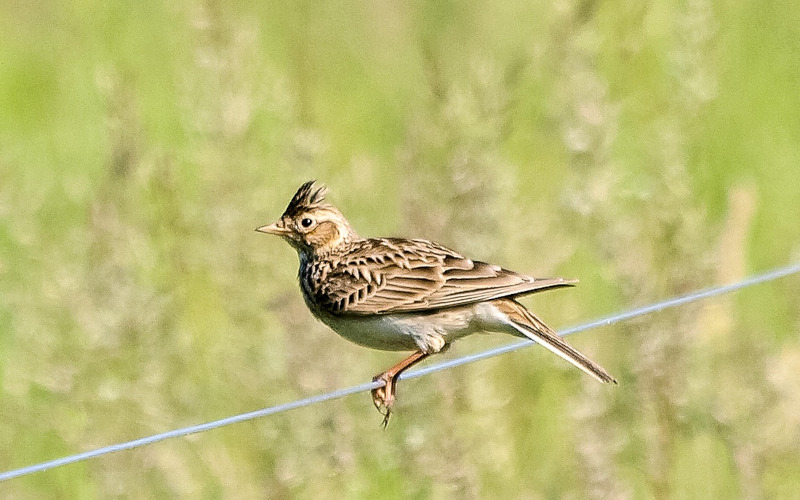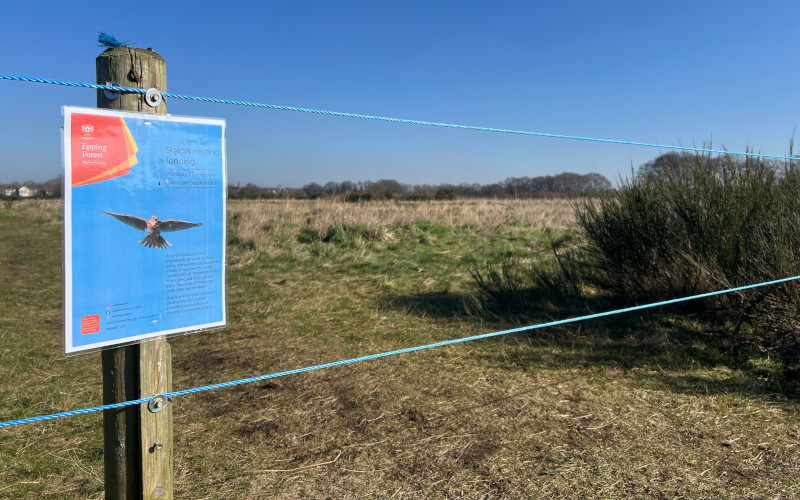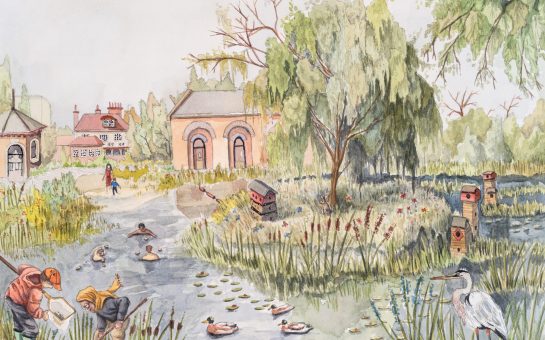Temporary fencing to protect nesting skylarks was erected in Epping Forest last Thursday.
The rope fencing, which covers an area equating to 0.2% of Epping Forest, will be in place until early September.
Epping Forest keepers set up the fencing with Wren Wildlife and Conservation Group volunteers, who have been monitoring the skylark population in Wanstead Flats for over a decade.
Epping Forest Charity’s head of conservation Tanith Cook said: “Installing these temporary cordons to deter human access gives these charismatic birds the best chance of successfully breeding.”
Skylarks build their nests on the ground in open grassland habitats, making them highly vulnerable to disturbance, predators or harsh weather.
The Epping Forest Charity, which is managed by City of London Corporation, has spent the past two years investing in better signage, public engagement, and volunteer support to reinforce the importance of protecting these birds.
This follows previous instances of vandalism and cutting of the cordons.
Cook said: “Epping Forest is a registered charity, so replacing ropes impacts our resources that could be used to enhance the Forest.”
Lauren from Leyton, 39, was walking her dog, Ray, the day after the rope fencing had been put up.
She said: “We’re really lucky in this part of the city because we’ve got a lot of green space, but it does mean that we’re sharing space with wildlife.
“A couple of times when I’ve been out walking, bird spotters have asked if I know about the skylarks.
“I told them I wanted to know more, and then we had gorgeous conversations about nature and their expertise.
“It’s really special, and I don’t feel like you get that walking through most parks.”
Dog walker Chris, 42, also expressed gratitude for having such incredible wildlife on his doorstep.
He said: “It’s their habitat, so if there are things we can do to make the wildlife successful, then we should do it.”

One in every six birds has been lost since 1980, according to the RSPB, and proactive conservation efforts are critical to avoid catastrophic implications for sites like Epping Forest, which require a balanced ecosystem.
The City of London Corporation’s Epping Forest and Commons Committee chairman Ben Murphy said: “We are so lucky to have conserved what we believe to be the closest returning population of ground-nesting birds to central London.”
Last year, the Wren Wildlife and Conservation Group recorded ten to 15 skylarks during breeding season on the Wanstead Flats and at least four young birds were successfully fledged thanks to their conservation efforts.
The two nesting areas can be found west of the football pitches and east of Centre Road.
Cook said: “Staying on marked paths, keeping dogs on a lead near nesting areas, and using binoculars to observe the skylarks in flight will help ensure the birds remain undisturbed.
“A skylark’s ability to hover high above their nesting sites while singing is one of the most iconic sights and sounds of open grassland and arable fields.”
For volunteer opportunities and information, visit Epping Forest City of London’s Facebook page or apply via Better Impact – Epping Forest
Picture credit: Lucy Dunnet





Join the discussion